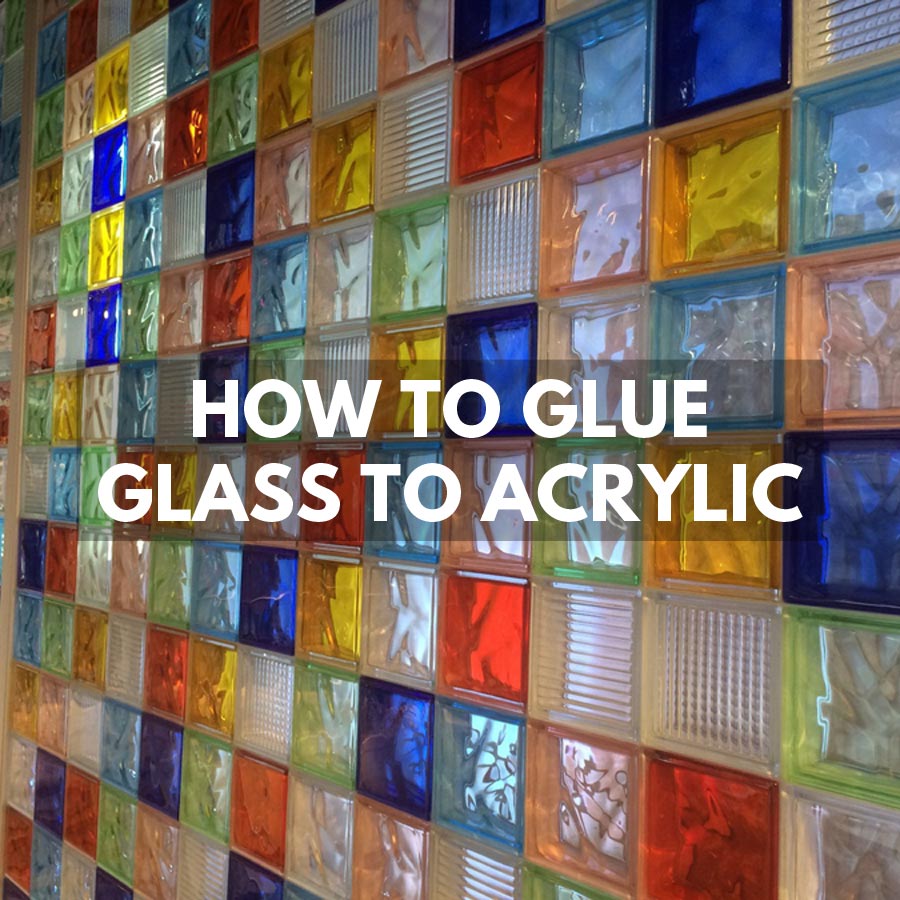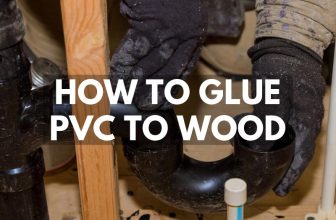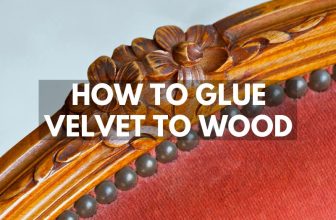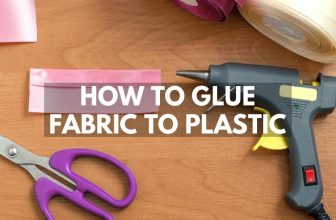
How to glue acrylic to glass? There are a total of three useful adhesives that will glue acrylic to glass and include superglue, epoxy, and silicone adhesive. All of these are among the best that are successful at creating an excellent bond between glass and acrylic surfaces.
One of these adhesives is only good for fast and instant adhesion while the other two are meant to set and cure overnight. When looking for a better and more secure bond that is meant for the long-term it’s better to use the longer curing adhesives. If you are doing a small craft project then you may also like the tips on this page about gluing twine to glass.
To learn how these will work, this guide will inform you about what needs to be prepped and why each adhesive may or may not be suitable to use. By following these tips, it will be successful in learning how to glue glass to acrylic surfaces.
What Glue Can You Use for Glass to Acrylic?
There are multiple types of glue you can use when crafting or doing DIY with glass or acrylic materials but these are the top 3 we would recommend:
Cyanoacrylate/Super Glue
Aside from the technical-sounding name, everyone knows that super glue is the most widely-known name for gluing a wide variety of materials together. What is interesting to note about cyanoacrylate is that it does bond to glass but there is a slight catch to this. It has a lot to do with the physical microscopic water that is naturally stored in glass which can prevent a good bond.
The best super glue to use for gluing acrylic to glass comes from the Loctite brand called Loctite Glass Glue. Regular super glue brands can work, but not nearly as well as Loctite has been formulated for gluing glass surfaces to other materials including acrylic. The advantage of glass glue is that there is no foggy residue around glued edges.
Epoxy Resin
Epoxy resin that comes in 2-parts doesn’t always work well with acrylic to glass so there are specific epoxy kits that are recommended for completing this unique type of adhesion. Using a high-performance and solvent-free epoxy such as Titan Bond Plus is highly effective at displacing water in the glass surface while it cures and bonds to acrylic additionally. It dries to an off-white color which might be off-putting to some DIY and craft hobbyists.
Pratley Quickset Clear is another 2-part epoxy that cures water clear if the clarity is needed for bonding acrylic to glass surfaces.
Silicone Adhesive
Silicone caulking naturally offers a long-lasting bond to smooth surfaces such as glass but not so much for acrylic. This is why silicone adhesive is used to create a near-perfect bond that is better for long-term adhesion. Silicone adhesive including Gorilla 100% silicone sealant, DAP Commercial Kitchen sealant, and E-6000 from Tap Plastics.
All of these silicones are excellent adhesives for gluing acrylic to glass surfaces. Since they are single-component silicone, these will all come in a large caulking tube that needs a caulking gun to squeeze out.
How to Prepare Glass and Acrylic Before Gluing
The very first thing that is required for gluing acrylic to glass is to clean both surfaces using isopropyl alcohol. This will remove any oils that sit on the surface and prevent the correct bond from any of the adhesives used to attach them together. There is no need to do anything else when using super glue, so pre-sanding of an acrylic surface wouldn’t help.
Pre-sanding is only needed when using 2-part epoxy. Silicone adhesive doesn’t need preparation since it will readily stick to acrylic and glass surfaces after they are cleaned.
How to Apply Glue for Acrylic to Glass
To use super glue between acrylic to glass, very little is needed to create a thin layer that will create the bond between these two materials. Only one or two drops from the superglue bottle on small pieces are enough. Epoxy, it can be applied with a pop stick and smeared on. Epoxy doesn’t need to go all the way to the edge but at least one-quarter inch from the edges to count for the overspill.
Silicone adhesive is applied the same way and uses a pop stick to spread the silicone as thinly as possible in a circular pattern. Because silicone adhesive is like a sticky gel, it needs to be spread thin to flatten out easier when acrylic and glass pieces are laid flat.
How to Cure Glue for Acrylic to Glass
There is no need to use anything to help cure superglue since it will create a bond by being compressed for at least 10 seconds. It’s best to allow the glue to set completely for the next 24 hours for a better bond and doesn’t need clamping. As for epoxy, any 2-part mixture will need to be set for at least 3-5 hours with a full 24 hours post-cure. Clamping for epoxy is advised if acrylic parts are glued to a vertical surface.
Silicone adhesive will also need clamping on vertical surfaces and will take a full day to totally cure. Both silicone and epoxy adhesives cure better when placed in a warm room above 75-80 degrees Fahrenheit.
Which Is the Best Glue to Use for Acrylic to Glass?
Obviously epoxy and silicone adhesive are the best to use for the maximum level of adhesion. Superglue is good for fast adhesion but may not be the best solution for long-term bonding. If you don’t find the right type of glass super glue or go with off-brand super glue brands, the bond may not last for very long. Epoxy likes to stick to glass but not so much to acrylic, so the best tip is pre-sanding acrylic with 500-grit sandpaper.
The best takeaway here is that the cost of silicone adhesive is much more affordable than epoxy and doesn’t require mixing. It must be a brand that is 100% silicone that is translucent so it will have the same clarity as clear acrylic and glass.










